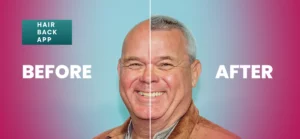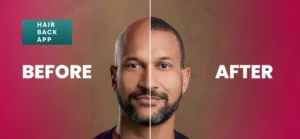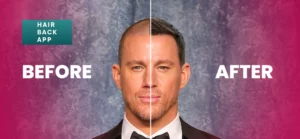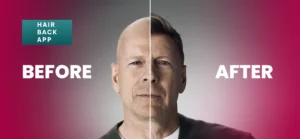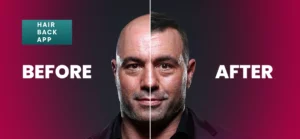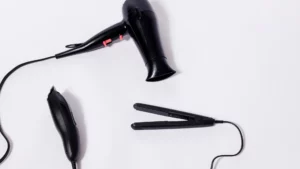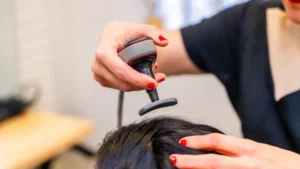Gender-specific hair Loss Solutions are increasingly recognized as essential for addressing the unique causes, patterns, and treatments related to hair loss in both men and women. While hair loss is a common issue affecting millions worldwide, the way it manifests and the methods for addressing it can differ significantly depending on gender.
Men typically experience hair loss due to hormonal changes and genetic factors, while women may struggle with hair thinning due to a variety of reasons, including hormonal fluctuations and stress.
In this article, we will explore gender-specific hair loss solutions, discussing the underlying causes, symptoms, and treatments for both men and women. By understanding these differences, individuals can find more effective, tailored treatments to manage their hair loss and regain their confidence.
Understanding Hair Loss in Men
Hair loss in men is a well-known and common issue, with the primary cause often being male-pattern baldness. This section delves into the causes, symptoms, and treatment options specifically for men, helping to understand the unique factors contributing to hair loss in this gender.
Causes of Hair Loss in Men
Hair loss in men is commonly driven by genetics, with male-pattern baldness (androgenetic alopecia) being the leading cause. This condition is influenced by testosterone, which converts to dihydrotestosterone (DHT), a hormone that shrinks hair follicles and accelerates the hair loss process.
While genetics plays a major role, lifestyle factors such as poor diet, stress, lack of sleep, and environmental exposures can also contribute to premature hair thinning. Additionally, stress effects on hair transplant outcomes have been observed, as high stress levels can impact the healing and growth of hair follicles after procedures like transplants.
Symptoms and Signs
In men, hair loss typically begins with a receding hairline or thinning at the crown. Over time, these areas expand, leading to visible bald spots or a significantly thinner head of hair. Recognizing the early stages of male-pattern baldness can help men take early action to manage their hair loss, preserving hair for longer periods.
Treatment Options for Men
Effective gender-specific hair loss solutions for men include several treatments:
- Medications: Finasteride and minoxidil are the primary medications used to combat hair loss. Finasteride works by inhibiting the conversion of testosterone to DHT, while minoxidil encourages hair growth by stimulating dormant hair follicles.
- Hair Transplants: Procedures like FUE (Follicular Unit Extraction) and FUT (Follicular Unit Transplantation) are effective methods of treating male-pattern baldness. Both techniques involve harvesting healthy follicles from areas of the scalp with strong hair growth and transplanting them to thinning or bald spots.
- Scalp Micropigmentation: A non-surgical solution, scalp micropigmentation uses tattoo-like dots to mimic the appearance of hair follicles and give the illusion of a fuller head of hair.
- Lifestyle Adjustments: Maintaining a healthy diet, reducing stress, and exercising regularly can support overall scalp health and prevent further hair thinning.
Understanding Hair Loss in Women
Hair loss in women is often misunderstood, as it typically presents differently than in men. While male-pattern baldness is commonly recognized, hair loss in women can be more diffuse and subtle, making it harder to detect. This section explores the causes, symptoms, and treatment options for women experiencing hair thinning and loss.
Causes of Hair Loss in Women
In women, hair loss can occur due to a variety of factors, with hormonal imbalances being a leading cause. Conditions like pregnancy, menopause, and thyroid issues can lead to hormonal shifts that trigger hair thinning. Additionally, women may experience genetic hair loss, though it tends to manifest as overall thinning rather than bald patches.
Women are also more likely to experience hair thinning due to stress, poor diet, or certain medications. For instance, stress effects on hair transplant procedures can be more significant for women, as emotional and physical stress can affect the recovery process and hair regrowth after a transplant.
Symptoms and Signs
Hair thinning in women often presents as diffuse thinning across the scalp, rather than a receding hairline or bald patches. Women may notice an increasing widening of the part or thinning around the crown.
The gradual nature of female hair loss can make it harder to detect, often leading to emotional distress as hair volume diminishes. The societal pressure for women to have thick, healthy hair can exacerbate these feelings of self-consciousness.
Treatment Options for Women
Several gender-specific hair loss solutions are available for women:
- Minoxidil: The only FDA-approved topical treatment for female-pattern hair loss, minoxidil helps stimulate hair follicles and promote growth.
- Hair Transplants: Like men, women can benefit from hair transplant surgeries. However, the techniques used for women are more delicate, as their hair follicles tend to be finer and more fragile.
- Laser Therapy: Low-level laser devices can help stimulate the scalp and promote hair regrowth. This non-invasive therapy can be a great solution for women seeking to improve hair density without surgery.
- Nutritional Support: Taking supplements like biotin, zinc, and iron can improve overall hair health. A diet rich in vitamins and minerals supports scalp health, reducing the likelihood of further hair loss.
Gender Differences in Hair Loss Treatment Approaches
Understanding the gender differences in hair loss treatment approaches is crucial for tailoring solutions that address the unique needs of both men and women. While the underlying causes of hair loss in each gender may overlap, the treatments must be customized to ensure the best outcomes. Here’s a look at how treatments differ between men and women:
Personalized Treatments for Men and Women
While treatments such as minoxidil and hair transplants are common to both genders, the approach differs significantly based on hormonal and genetic factors.
Men typically experience hair loss due to the effects of DHT, whereas women may struggle with hormonal fluctuations that affect hair thickness.
Post-transplant hormonal shift can affect both men and women differently. Men’s hair loss is generally more localized, while women tend to experience diffuse thinning across the entire scalp.
Thus, hair transplant methods for women are often more intricate, and success rates can vary depending on the type of hair thinning. Moreover, Hair transplant mental health considerations are crucial, especially for women, who may face heightened emotional concerns related to the procedure.
Psychological Impact of Hair Loss
The psychological toll of hair loss differs between men and women. For many men, male-pattern baldness is more accepted by society, but it can still affect their confidence. On the other hand, women often face greater stigma around hair thinning, which can result in anxiety and low self-esteem.
Addressing the emotional impact of hair loss is just as important as addressing the physical symptoms, and gender-specific solutions should always incorporate mental health support.

Emerging Solutions for Gender-Specific Hair Loss
Exciting new treatments are emerging to address gender-specific hair loss solutions, providing hope for individuals looking for effective and personalized remedies. Here are some of the most promising options:
- PRP (Platelet-Rich Plasma) Therapy
PRP therapy is a non-invasive treatment that uses a patient’s blood to regenerate hair follicles. The process involves drawing blood, processing it to concentrate the platelets, and injecting the plasma into the scalp. These platelets contain growth factors that stimulate hair growth. This treatment is suitable for both men and women, although the results may vary depending on the type and severity of the hair loss. For men with male-pattern baldness or women dealing with thinning hair due to hormonal changes, PRP can offer significant improvements in hair density. - Stem Cell Therapy
Stem cell therapy is an innovative treatment that has gained attention in the field of hair restoration. This method involves using stem cells to regenerate hair follicles, promoting hair growth and potentially reversing the effects of baldness. Although still in the experimental phase, stem cell therapy shows great promise for both men and women suffering from severe hair loss. As research progresses, it could become a mainstream solution for those who have not responded well to traditional treatments. - Hair Growth Supplements
Personalized hair growth supplements are becoming increasingly popular as a way to target the root causes of hair thinning. These supplements are designed to address gender-specific deficiencies and support overall hair health. For example, men might benefit from supplements that reduce DHT levels, which contribute to male-pattern baldness, while women may need supplements that balance hormonal fluctuations or provide additional vitamins like biotin, zinc, and iron to promote hair growth. By addressing individual nutritional needs, these supplements can improve scalp health and help stimulate natural hair growth.
These emerging treatments are not only giving people new options for hair restoration but also improving the customization of care to address the unique needs of each gender. As technology advances, these treatments may become the cornerstone of effective, long-lasting hair loss solutions.
Practical Tips for Managing Hair Loss
Managing hair loss effectively requires not only treatment but also practical daily habits that can support healthy hair growth. Whether you’re male or female, adopting a proper hair care regimen can help minimize further thinning and promote stronger hair. Here are some actionable tips for both men and women to incorporate into their routines:
Men’s Hair Care Regimen
For men experiencing hair loss, maintaining scalp health is essential. Gentle shampoos, conditioners, and treatments designed to improve circulation and stimulate follicles can support hair growth.
Men should also avoid harsh chemicals or overstyling their hair to prevent further damage. Additionally, using volumizing sprays or hair fibers can help add thickness and cover thinning areas, providing a fuller look.
Women’s Hair Care Regimen
Women should focus on gentle hair care that nourishes the scalp. Using sulfate-free shampoos and incorporating scalp massages can improve blood flow, which supports hair growth.
Women should also avoid tight hairstyles that can lead to compromised scalp health and further hair breakage. Light styling techniques, such as air-drying or using low-heat tools, can prevent unnecessary stress on thinning hair.
Conclusion
Gender-specific hair loss solutions are crucial for addressing the unique causes, patterns, and psychological effects of hair loss in both men and women.
By understanding the differences in how hair loss manifests in each gender, individuals can select the most effective treatments, whether through medications, hair transplants, or innovative therapies.
Whether it’s dealing with post-transplant hormonal shifts or managing the emotional toll of hair thinning, seeking professional guidance is essential.
For both men and women, taking a proactive approach to hair health through personalized treatments and lifestyle changes can help restore confidence and maintain long-term hair care.
Always consult with a specialist to determine the best course of action tailored to your needs.


